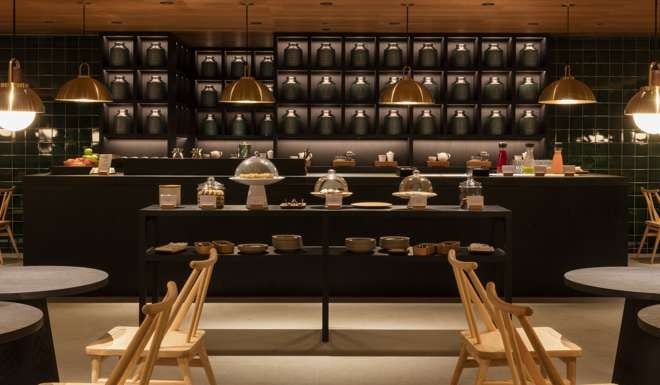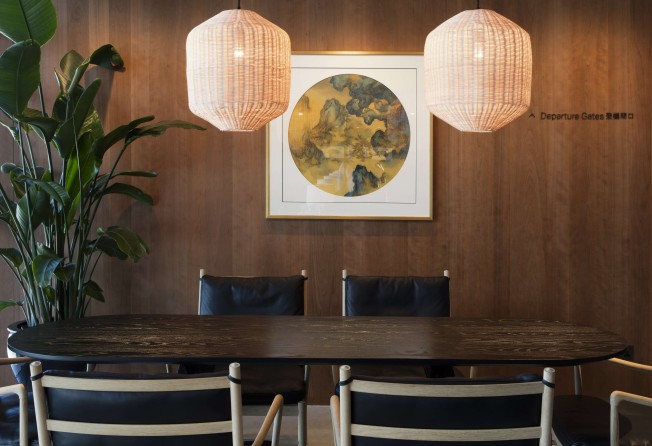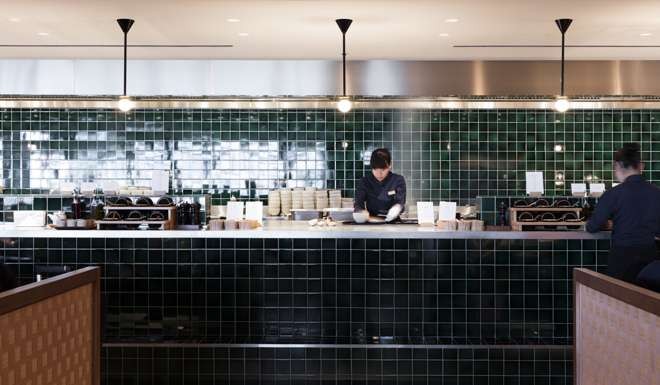
Uncovering the design secrets behind Cathay Pacific’s new business class lounge
London-based Ilse Crawford says her concept for the airline’s new Hong Kong lounge combines an intuitive layout with seamless functionality

“Designing a large airport lounge is a bit like designing a town,” says interior designer Ilse Crawford of Studioilse. “It’s just like the busy roads and smaller, slower lanes across the city.”
Her concept for Cathay Pacific Airways’ recently refurbished 33,000 sq ft business class lounge at the Hong Kong International Airport features long corridors with distinct spaces that connect with smaller “lanes” designed to make it quicker and easier for travellers to find their own space within the lounge.
“Each room is a room on its own, but you also need to know where you are in the architecture,” Crawford says.
The design is part of a wider renovation of the airline’s lounges around the world using a similar material palette while adding local elements, such as Japanese woven bamboo lampshades in Tokyo, and works by local artists. So far, lounges in Tokyo, Manila, Bangkok, Taipei, Vancouver and the Pier first class lounge in Hong Kong have been refreshed.

Just because you are in an airport, it shouldn’t be somewhere you wouldn’t normally go
Given the vast scale of the newest business class lounge project, Crawford says it was especially important to devise an intuitive layout that would provide a direct route through lively, sociable spaces, such as a food hall offering grab-and-go options, standing tables or shared tables and benches, a bar area and signature noodle bar.
“The teahouse marks a change in pace as passengers enter the quieter, more relaxing, well-being area of the lounge,” she says. “In the farthest point, one can find quiet nooks, each with their own generous lounger, pendant light, coat hook and charging socket where passengers can rest away from the bustle.”
Passengers can also take a slower, quieter journey around spacious lounge areas designed for relaxation.
By comparison, the layout of Cathay’s first class lounge (renovated by Crawford in 2015) is arranged like an apartment, with the rooms off a central hallway.
According to Crawford, the different styles of furniture and lighting arranged around the different activities provide key visual markers that help to signal the mood of each area. “[Lighting] should light people and not the space,” she says.

In the food hall, the self-service buffet was replaced with a contemporary deli-style counter or coffee cart. Although there is a who’s who collection of designer furniture including Eames Loungers and Crawford’s own Solo chair, each piece was apparently selected for how it makes the user feel. “How it looks is secondary,” she says.
Crawford’s eagle eye also extended to the pièce de résistance of every business class lounge: the bar.
“We felt strongly that travellers need to feel grounded so things like a real cocktail bar are important. It is just so much nicer than a ginormous table with every type of alcohol laid out for you to serve yourself. Just because you are in an airport, it shouldn’t be somewhere you wouldn’t normally go.”